Whenever we use table salt, we may not be too interested about its origins or how it was processed. But such is not the case with the pink-coloured kind, also known as Himalayan Salt. This is the kind that you would want to know more about because of its many health benefits.
Himalayan Salt is naturally pink in colour and is popular around the world for as a rich source of minerals and nutrients that contribute to overall good health. This article provides a comprehensive guide about pink coloured salt and how it helps the body in many ways.
Where Does Himalayan Salt Come From?
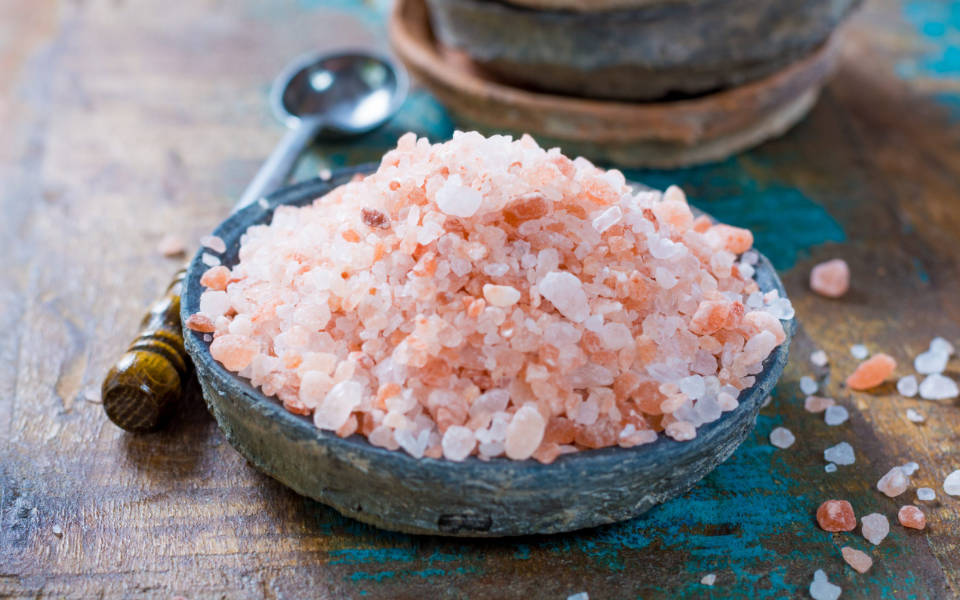
Himalayan Salt is extracted from the Khewra Salt Mine, which is located near the Himalayas in Pakistan. It is hand-extracted, and the usual process of refining is skipped. This preserves the vitamins and minerals, making it a more organic alternative. The natural harvesting process allows Himalayan Salt to contain more trace elements that you can’t find from table salt.
The Khewra Salt Mine near the Himalayas is believed to be formed millions of years ago through massive evaporation from bodies of water. It is one the most lucrative sources of pink-coloured salt anywhere in the world.
Is Himalayan Salt Good For You?
Like table salt, the Himalayan Salt is made up of sodium chloride. It can be pretty much utilized in the same way. You can use it as seasoning for food. The taste is also similar, if not identical.
However, the difference lies in the amount of trace minerals it contains. Himalayan Salt is estimated to contain around 84 different vitamins and minerals. Let’s talk about the various Himalayan salt minerals that are essential for health:
1. Sodium
Although not beneficial when taken in excess, sodium is very important for various body processes. It helps retain water in the body so that dehydration is prevented. Maintaining a sufficient intake of sodium (3,000 mg per day) is essential for the body to prevent hypotension and other cardiovascular events. Sodium is especially helpful when it has a proper balance with potassium, another trace mineral found in Himalayan Salt.
2. Potassium
Compared to table salt, Himalayan Salt contains higher amounts of potassium. Potassium is known as the “ultimate balancer” for sodium in the body. This helps regulate blood pressure and prevent hypertension by relaxing the blood vessels. Maintaining a healthy potassium-to-salt ratio is essential for preventing heart attacks, stroke, and other cardiovascular disease.
3. Calcium
Calcium is essential for building strong bones and teeth. Unfortunately, calcium is one of the elements that is usually lost during the refining process of most salts. But because Himalayan Salt has undergone little to no refining, its calcium content is mostly preserved. Plus, there are higher calcium amounts found in pink-coloured salt compared to other sources. Using Himalayan salt is a great way to contribute towards the daily recommend calcium intake for optimum nutrition.
4. Magnesium
This is a highly indispensable mineral in the body, as it contributes to over 300 enzyme reactions that impact overall health. Magnesium contributes to bone health by helping build a higher bone density. It helps decrease the risk of developing osteoporosis later on in life, especially for females who have undergone menopause. On top of this, magnesium plays an important role in preventing and regulating diabetes. A medical study about magnesium shows that sufficient intake of the mineral has an effect on decreasing insulin resistance. This can be done by taking magnesium supplements and getting it from natural dietary sources such as Himalayan Salt.
5. Iron
Iron is the predominant mineral that makes Himalayan Salt pink coloured. This mineral helps the body promote more hemoglobin, which is extremely important for transporting oxygen to the body. If a person has an iron deficiency, there is a lower amount of hemoglobin in the body. This is called iron deficiency anemia, and could lead to dizziness, nausea, weakness, and fainting. Using Himalayan salt will help prevent the condition and contribute towards the recommended daily intake of iron.
Is Himalayan Salt Iodized?
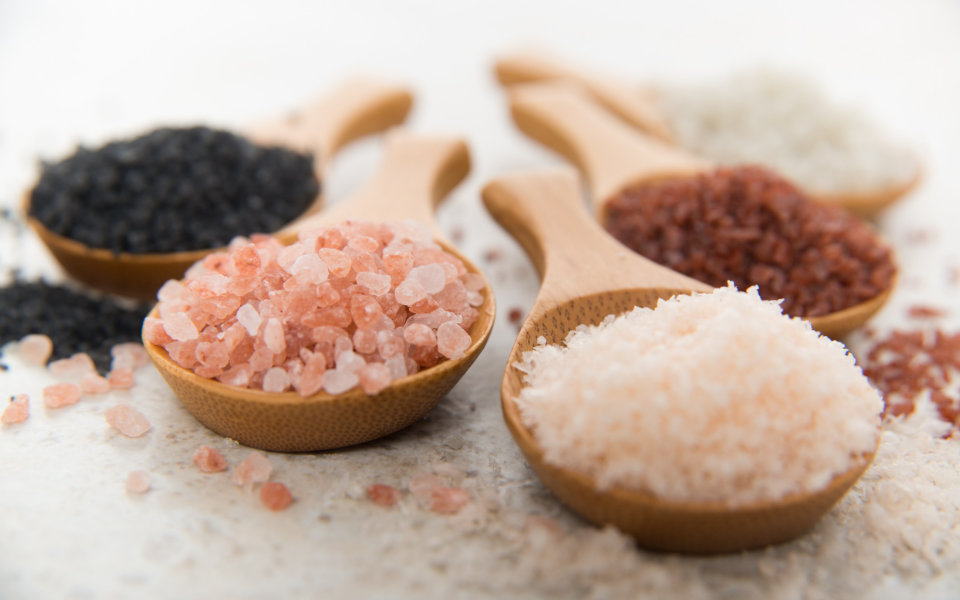
Iodine is not a naturally occurring substance found in unrefined salt, although it is possible for Himalayan salt to contain trace amounts of it in some cases. The recommended daily intake of iodine is only 150 mcg for a typical adult.
Himalayan salt’s lack of natural iodine (just like table salt) doesn’t cancel its many nutritional properties. With over 80 trace minerals that the body needs, Himalayan salt pink is still the most preferable option. Taking it alongside natural iodine sources is best in order to prevent an iodine deficiency.
Iodine abounds in natural dairy products such as milk and yogurt, shrimp, tuna, eggs, and prunes. Use Himalayan salt alongside these rich iodine sources will give you a complete supply of minerals and nutrients needed by your body on a daily basis.
Himalayan Salt Benefits
According to Greenmedinfo.com, unrefined Himalayan salt is one of the most preferable forms of salt to consume compared to other alternatives (table salt, Celtic salt, etc). The myriad health benefits can be seen when you compare Himalayan salt vs. sea salt. Here are some of the ways Himalayan salt can impact health in a good way:
1. Promotes healthy PH balance of cells
It is important for the body to maintain a good PH balance between acid and alkaline. Too much of one thing can lead to health problems. For example, if the body is too alkaline (base), this could lead to nausea, numbness, confusion, coma and even death. On the other hand, if the body is too acidic, this could lead to headaches, increased heart rate, respiratory failure and kidney failure. Himalayan salt helps prevent both acidosis and alkalosis.
2. Regulates blood pressure levels
As mentioned earlier, Himalayan salt contains both sodium and potassium. Both minerals are important for blood pressure regulation. If coupled with a healthy water intake, the sodium and potassium found in Himalayan salt can help prevent or lower hypertension.
3. Improves digestion and gives a feeling of fullness
Himalayan salt contains nutrients that stimulate the secretion of salivary and digestive enzymes. These enzymes help the digestive tract absorb nutrition derived from food. Furthermore, salt helps activate taste buds and signal the digestive tract that is ready to receive and break down food. The result is better digestion and absorption.
4. Promotes better respiratory health
An Oxford University study showed that restricting salt can hinder sexual function. On the other hand, proper recommended intake of salt coupled with a balanced diet, can stimulate sexual function. This is because a number of negative health conditions can arise from low sodium intake, including chronic fatigue syndrome. CFS is known to contribute to erectile dysfunction as well. Taking the required daily amount of sodium through Himalayan salt will help avoid these health conditions.
5. Helps prevent dehydration and restore electrolyte balance
Himalayan salt can fight dehydration and restore electrolyte balance in the body, when coupled with sufficient water intake. Regular water, especially bottled water, can satisfy thirst but sometimes do not contain enough electrolytes that the body needs. These electrolytes can be depleted, causing a myriad of health problems related to dehydration. To remedy the situation, use Himalayan salt on the food you eat to supply your body with trace minerals and electrolytes required for keeping your body hydrated.
6. Boosts metabolism
Himalayan salt is beneficial to the body because it also boosts metabolism. This makes it preferable for weight loss purposes or avoiding excess fat in the body because of faster fat burning. In 1994, a study by Dr. Jenz Titze showed that salt (especially Himalayan salt), has “surprising metabolic effects”. Those who participated in the study were given an increased salt intake. The study participants demonstrated a higher production of glucocorticoid hormones in the body. These hormones are known to influence metabolism and immune function.
Various Uses Of Himalayan Salt
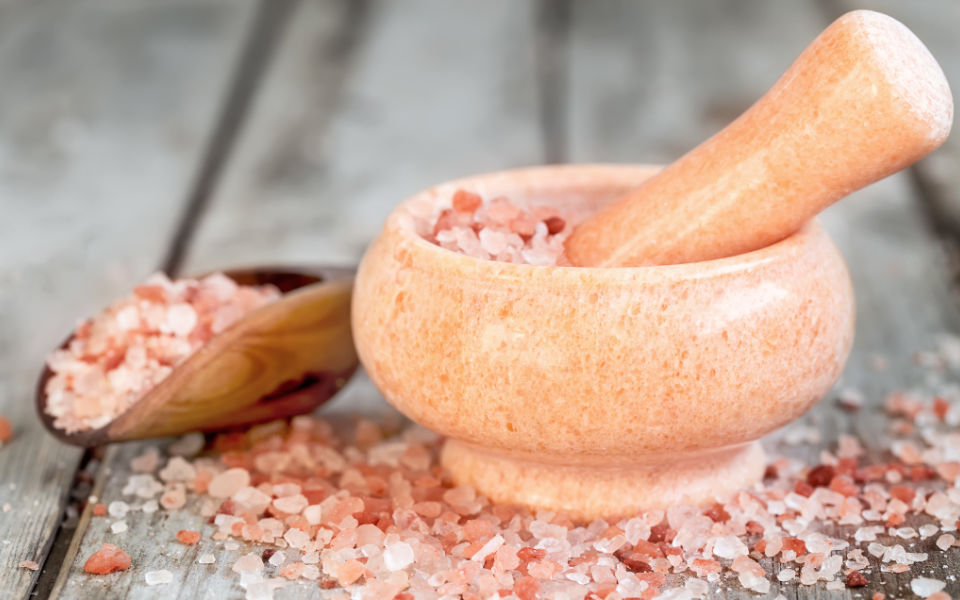
According to a recent study, the risk of developing heart disease increases with significant reductions in sodium intake. Although medical guidelines recommend controlled sodium intake for patients with cardiovascular problems, very low intake does not provide any better effects on heart health.
This is where Himalayan salt comes in. When it comes to maintaining a proper intake of sodium, the kind of salt being used matters a lot. While refined table salt roughly contains the same amount of sodium, it doesn’t contain nearly the same amount of nutrients.
Here are the ways that Himalayan salt can be used for better cardiovascular and overall health:
1. Use it for cooking
Instead of using table salt, you can use pink-coloured Himalayan fine salt to add more flavour to your cooking. While people may not notice what kind of salt you used in your dishes, the difference lies in the nutrients that food contains.
Make sure you adjust the sodium derived from Himalayan salt for cooking. It is very common for unrefined salt to be less salty in taste than refined ones. This means, to achieve the same level of taste, you may need to add more pink-coloured seasoning to your food.
However, the amount you need to season your cooked food may vary depending on your preference. If you’re using natural Himalayan salt that is pre-packaged, you can check the label and see just how much sodium it contains per serving or teaspoon. This will give you an idea of the quantity you need to use on your food.
Regardless of how much salt you intend to use, make sure you are staying within the recommended daily sodium intake of 2,300 milligrams per day. This is equal to around 1 full teaspoon of table salt, and a little bit over 1 teaspoon for Himalayan pink coloured salt.
2. Use it for home remedies
Himalayan salt is not only good for seasoning food, but also for various home health remedies. Here are some of the ways you can use it:
- Create a salt gargle for sore throat. According to Penn State Medicine, saltwater can help fight off bacteria, loosen throat mucus, and promote healthier breathing. The recommended amount for saltwater gargle is ½ teaspoon of Himalayan salt in one cup of warm water. Gargle the mixture to soothe sore throat symptoms.
- Electrolyte replenishment. Instead of using energy drinks and electrolyte drinks that contain lots of added sugar, you can opt for a home remedy that is easy to prepare. Combine two cups or purified water, half a cup of lemon juice, one-fourth teaspoon of Himalayan salt, and a tablespoon of honey. Mix it and drink in order to replenish electrolytes. Note that this drink is more beneficial if you strictly use pink Himalayan sea salt. This is because of the 80+ minerals it contains.
- Himalayan salt bath or body scrub. Himalayan salt is a natural exfoliant. Applying it to your skin can give it a soft and silky texture. Exfoliation is when dead layers of skin are naturally shed off to give the skin surface a radiant glow. Lots of people use exfoliant products that contain other harmful chemicals. But you can achieve natural exfoliation by simply using Himalayan pink salt as a bath or body scrub. According to Prevention.com, a salt-based body scrub can be prepared by mixing one cup of pink colored fine grain Himalayan salt, one-fourth cup olive oil, and 10 drops of essential oil. This can be applied all over the body to achieve exfoliating effects.
3. Use it to purify air
Himalayan salt is believed to be a natural air purifier, it is known to attract and hold water molecules from the surrounding environment. Salt lamps can be used to purify contaminated air and keep it clear of air pollutants. Let’s discuss Himalayan salt lamps in the next section:
Are Himalayan Salt Lamps Good For You?
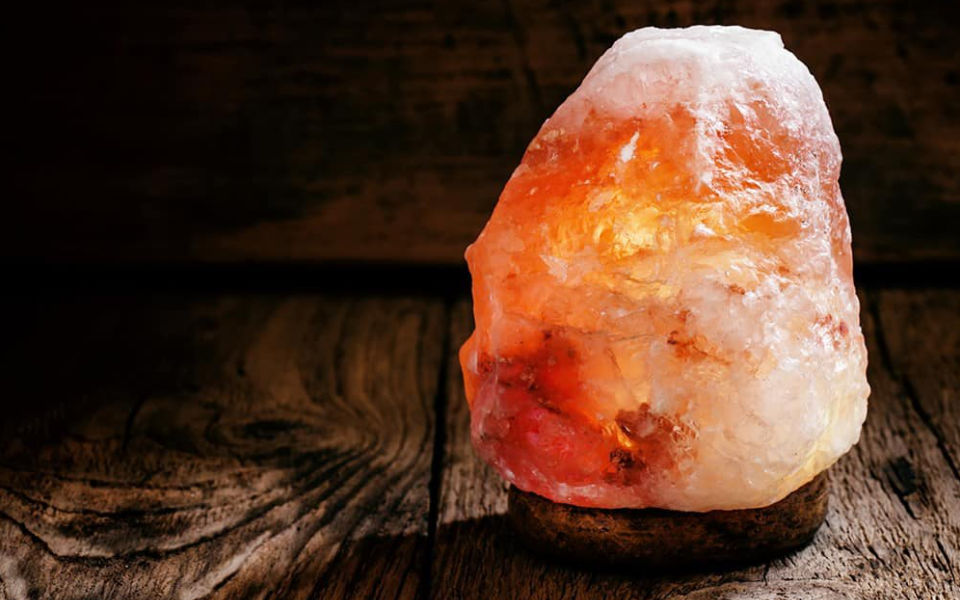
Himalayan salt lamps (or salt crystal lamps) can be used for dim-lighting rooms, spas, and even entire houses. However, their benefits do not stop at lighting dark places, but more on their “hygroscopic” properties. More on this below:
Hygroscopy, according to draxe.com, is the ability of an element or substance to absorb water molecules from the air in room temperature. Himalayan salt possesses this property, which is why it is used as a salt lamp air purifier. As water molecules from immediate surroundings are absorbed by the salt, the air pollutants and contaminants are trapped as well.
Himalayan salt lamps are especially useful for people with the following conditions:
- Those with asthma. People with chronic asthma need clear air around them, as dust particles and air pollutants can quickly trigger asthma attacks. Using Himalayan salt in and around the house will lessen the risk of asthma episodes and promote better respiratory health.
- Those who are allergic to pollen and other airborne allergens. Hay fever, also known as allergic rhinitis is caused by airborne allergens like pollen. Studies show that Himalayan salt lamps emit negative ions into the air, which can help neutralize or eliminate positively charged ions (such as allergens).
- Those who have trouble sleeping. According to Michigan Health, trying to sleep with bright lights on can cause a suppression in melatonin. This is a hormone that helps regulate the body’s Circadian rhythm and signals to the brain whether it’s daytime or nighttime. To avoid melatonin suppression and achieve a good night’s sleep, Himalayan salt lamps can be used to dimly light a room. This, and the fact that the room air is cleaner because of the salt lamp, contributes to deeper and more comfortable sleep.
Various clinical studies in the UK showed that salt lamp usage showed dramatic improvements in people suffering from asthma, bronchitis, COPD, and cystic fibrosis. The results are astounding:
- 85 percent of people with mild to moderate asthma showed improvement
- Salt lamp therapy helped 75% of people with severe asthma cases
- 97 percent of chronic bronchitis sufferers and other related diseases were helped by Himalayan salt usage.
Clearly, salt rock lamps made from pink-coloured salt are not just for decorative purposes, but for overall health improvement as well.
Other Benefits Of Himalayan Salt Lamps
Aside from alleviating respiratory conditions, Himalayan salt lamps carry other health benefits, such as the following:
1. Balances electromagnetic radiation
The modern Digital Age has given birth to hundreds of appliances and devices that emit too much electromagnetic radiation. Here are some examples:
- Cellphones
- Computers
- TV set
- Wi-fi router
- Tablet devices
Too much exposure to electromagnetic radiation can have serious effects on one’s long term health. The positive ions found in EM radiation can cause fatigue, headaches, depression, loss of libido and anxiety over prolonged and repeated exposure.
As mentioned earlier, Himalayan salt lamps emit negative ions that cancel out positively charged allergens in the air. On top of that, it is thought to cancel out positive ions emitted by EM radiation as well.
2. Reduces stress levels
Himalayan salt lamps provide soft reddish to orange lighting that can be pleasing to look at. Walking into a room that is lit with a salt lamp can do wonders for one’s mood. Moreover, fresher air around the salt lamp gives people a break from outside pollution, especially those who are living in highly urban surroundings.
3. Boosts blood flow
The negative ions that Himalayan salt lamps emit are believed to be beneficial for improving blood flow. Although more studies and research are needed to prove this, experts and researchers agree that it is possible for salt lamps to enhance blood circulation.
Guide To Buying Himalayan Salt Lamps
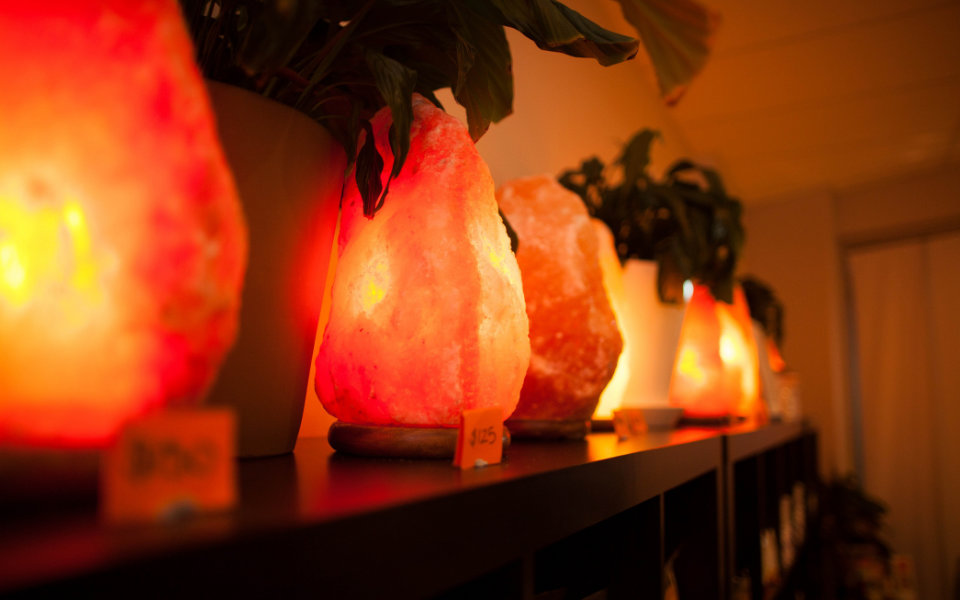
Now that you are familiar with the various Himalayan salt lamp benefits, you might be wondering how to choose the right Himalayan salt lamp for you. Here are some things to consider before getting one:
1. The colour of the lamp
Himalayan salt lamps come in many natural colours. Those that are white in color emit the brightest light but are very rare. Orange lamps are the most common, and they are a favourite among many because of its warm glow. Red coloured salt lamps are attractive to the eyes, but also has the darkest glow. Pink coloured ones fall somewhere in between orange and red, and can be a good option for those wanting some balance within the room.
Regardless of the colour you prefer, always verify if it is authentic or not. One of the best ways to test this is to look at the amount of light it radiates. Authentic Himalayan salt lamps typically don’t emit too much light that is “blinding” to the eyes. Usually, they are only able to provide dim illumination.
2. The size of the lamp
Natural, uncrafted salt lamps vary in size. As a general rule of thumb, the bigger the lamp, the more negative ions it can emit through the air. So when choosing a Himalayan salt lamp to use, consider the size of the room and number of people who live there. For example, if you live in a larger place, you might want to get larger Himalayan salt lamps, or get one for each major section of the house.
3. The shape of the lamp
Natural salt lamps will have an uneven shape, appearing more like a rock formation than an actual lamp. Opting for irregularly shaped salt lamps is best, as it ensures you are getting a piece of nature and not a factory product. However, for decorative purposes, there is no problem in getting crafted salt lamps that are shaped as bowls, vases, or lanterns.
Summary
Himalayan salt is a healthy source of sodium, potassium, zinc, magnesium, and other important minerals. Using it for cooking will provide the body with essential elements needed for various physiological processes.
It may also be used for non-dietary purposes, such as body scrub, mouthwash, remedy for sore throat, remedy for constipation, and many others. The benefits of Himalayan salt are well-documented by studies and extensive research shown throughout this article.
Finally, the Himalayan salt lamp can be used to fight respiratory problems such as asthma, bronchitis and breathing allergies. It acts as an air purifier that traps air pollutants and contaminants along with water molecules. Moreover, the negative ions that the salt lamp emits can help minimize the effects of electromagnetic radiation and potentially improve blood flow. This long list of Himalayan salt health benefits is sufficient for anyone to conclude that it is better than table salt in most aspects.


